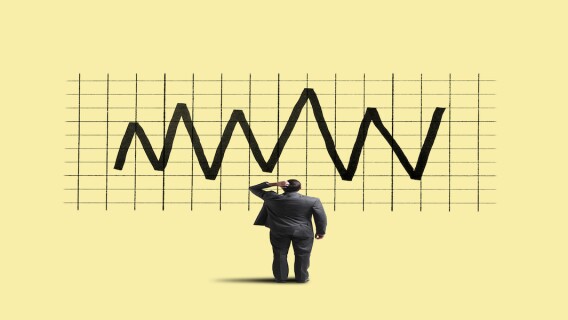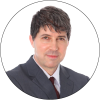With each passing month, it becomes evident that last October’s low in the large-cap U.S. stock market indexes was the end of the bear market and the start of a new bull. In the last nine months since then, the benchmark S&P 500 is up almost 30% and has erased most of its losses since the bear made its appearance in early 2022.
Despite those impressive gains, it’s hard to dispute that plenty of opportunities still abound in most of the S&P’s 11 major sectors and that the nascent bull market still has legs. (Indeed, many analysts here at Cabot have made that very case in recent weeks.)
However, that doesn’t necessarily mean it will be smooth sailing for investors in the coming weeks. There are in fact a few reasons for expecting that while the major trend should remain up, headwinds will also likely increase between now and the autumn months, which could lead to late-summer market volatility. Let’s examine some of them.
[text_ad]
To start with, here’s a key seasonal consideration: August is historically one of the worst months of the calendar year for the major averages. Expounding on this, market statistician Jeff Hirsch of Stock Trader’s Almanac wrote in a recent blog post:
“Money flows from harvesting made August a great stock market month in the first half of the Twentieth Century. It was the best DJIA month from 1901 to 1951. Now it is the worst DJIA and second worst S&P 500, NASDAQ, Russell 1000, and Russell 2000 month over the last 35 years, 1988-2022 with average performance ranging from 0.1% by NASDAQ to a –0.9% loss by DJIA. Last year, DJIA, S&P 500, NASDAQ, and Russell 1000 all declined over 4% in August.”
Hirsch went on to point out that pre-election year Augusts are not quite as dismal. In most pre-election years since 1950, August goes from being the Dow’s worst month to its eighth worst, while for the S&P it drops to #9 and for the Nasdaq, it falls all the way to #10.
“However,” he added, “all five indexes have declined in August during the last three pre-election years, 2019, 2015 and 2011,” concluding that August’s “pre-election year advantage is fading.”
Another consideration is consumer sentiment, which has lately been fairly sanguine and supportive of the summer market rally. For instance, the Conference Board’s monthly Consumer Confidence Index recently hit its highest level since July 2021, helped by cooling inflation and a strong job market.
What’s more, consumer spending has been a strong support of the U.S. economy in the last three years, helped by trillions of dollars in Covid-era federal stimulus payments and excess savings among Americans. That said, this trend appears to be slowing.
James Stack of InvesTech Research has pointed out that same-store retail sales have gone negative on a year-on-year basis in Johnson Redbook’s latest figures. (The Johnson Redbook Index is a sales-weighted, same-store sales growth in a sample of large U.S. general merchandise retailers across some 9,000 stores.)
According to Stack, “If this continues to deteriorate, it implies that consumers are spending less overall than before and a recession becomes more probable.” While the jury is still out on a recession occurring anytime soon, even the hint of falling retail sales could contribute to greater volatility in equities as we head into the fall months (when Wall Street analysts pay even closer attention to retail sales).
A final consideration is that there has lately been a visible rotation into defensive-oriented sectors among institutional traders. Among the primary recipients of fresh fund inflows are the utilities, consumer staples and healthcare sector stocks.
This doesn’t necessarily mean the bull market is in imminent jeopardy. But when all three major defensive sectors are rising in unison, it typically serves to diminish at least some of the forward momentum of the market’s riskier areas (e.g., tech). And decreasing momentum often gives birth to increased volatility. To that end, the recent multi-year lows in the CBOE Volatility Index (VIX) suggest the odds are increasing for the reappearance of market turbulence in the coming weeks.
In view of the evidence discussed here, participants should prepare for the possibility of higher volatility later this summer by tightening stops on existing positions and being selective when mulling new trades.
That said, with the dominant medium- and longer-term trends of the major averages still bullish, it would be premature to pull up all stakes and assume the bears are about to take over. Stock picking is one of the main ingredients for navigating volatility, which is why I highly recommend Mike Cintolo’s Cabot Top Ten Trader for expert advice in selecting the best-performing stocks in all market environments.
[author_ad]


